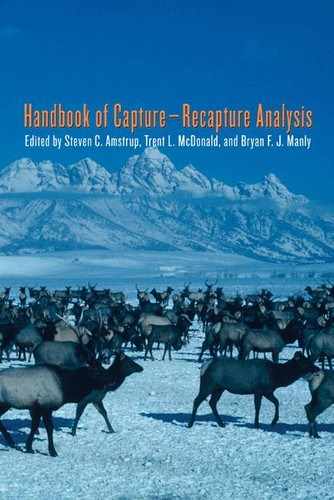Book Description
Every day, biologists in parkas, raincoats, and rubber boots go into the field to capture and mark a variety of animal species. Back in the office, statisticians create analytical models for the field biologists' data. But many times, representatives of the two professions do not fully understand one another's roles. This book bridges this gap by helping biologists understand state-of-the-art statistical methods for analyzing capture-recapture data. In so doing, statisticians will also become more familiar with the design of field studies and with the real-life issues facing biologists.
Reliable outcomes of capture-recapture studies are vital to answering key ecological questions. Is the population increasing or decreasing? Do more or fewer animals have a particular characteristic? In answering these questions, biologists cannot hope to capture and mark entire populations. And frequently, the populations change unpredictably during a study. Thus, increasingly sophisticated models have been employed to convert data into answers to ecological questions. This book, by experts in capture-recapture analysis, introduces the most up-to-date methods for data analysis while explaining the theory behind those methods. Thorough, concise, and portable, it will be immensely useful to biologists, biometricians, and statisticians, students in both fields, and anyone else engaged in the capture-recapture process.
Table of Contents
- Cover
- Halftitle
- Title
- Copyright
- Contents
- List of Illustrations
- List of Tables
- Preface
- One Introduction to the Handbook Bryan F. J. Manly, Trent L. McDonald, and Steven C. Amstrup
- Two Classical Closed-population Capture–Recapture Models Anne Chao and Richard M. Huggins
- Three Classical Open-population Capture–Recapture Models Kenneth H. Pollock and Russell Alpizar-Jara
- Four Modern Closed-population Capture–Recapture Models Anne Chao and Richard M. Huggins
- Five Modern Open-population Capture–Recapture Models James D. Nichols
- Six Tag-recovery Models John M. Hoenig, Kenneth H. Pollock, and William Hearn
- 6.1 Introduction
- 6.2 Assumptions of Brownie Models
- 6.3 Interpretation of the Tag-recovery Rate Parameter
- 6.4 Functional Linkage Between the Exploitation Rate and the Survival Rate
- 6.5 Instantaneous Rate Models for Estimating Harvest and Natural Mortality
- 6.6 Diagnostics and Tests of Assumptions
- 6.7 Preventing and Dealing with Failures of Assumptions
- 6.8 Chapter Summary
- Seven Joint Modeling of Tag-recovery and Live-resighting Data Richard J. Barker
- Eight Multistate Models Carl J. Schwarz
- Nine Examples Trent L. McDonald, Steven C. Amstrup, Eric V. Regehr, and Bryan F. J. Manly
- 9.1 Introduction
- 9.2 Open-population Analyses of Data on the European Dipper
- 9.3 The Huggins Closed-population Model Applied to the European Dipper Data
- 9.4 Assessing Goodness-of-Fit
- 9.5 Horvitz-Thompson Open-population Size Estimates
- 9.6 A Multistate (Multistrata) Model
- 9.7 Polar Bears in the Southern Beaufort Sea
- 9.8 Dead Recoveries of Mallard Ducks
- 9.9 Chapter Summary
- Ten Capture–Recapture Methods in Practice Bryan F. J. Manly, Steven C. Amstrup, and Trent L. McDonald
- Appendix
- References
- Contributor’s Notes
- Index
